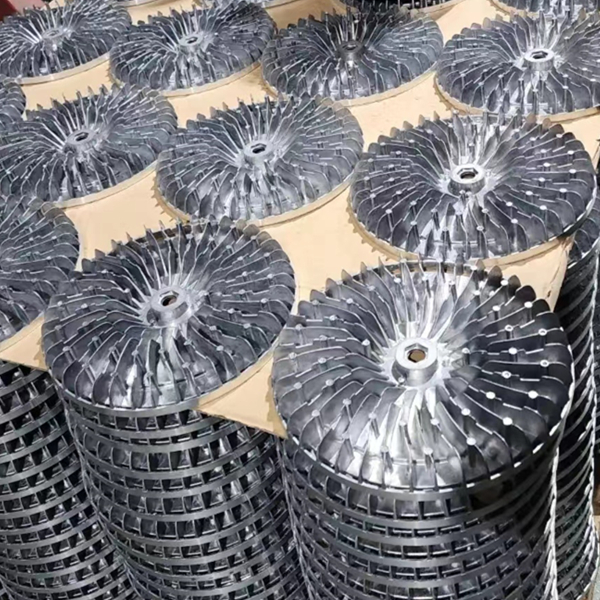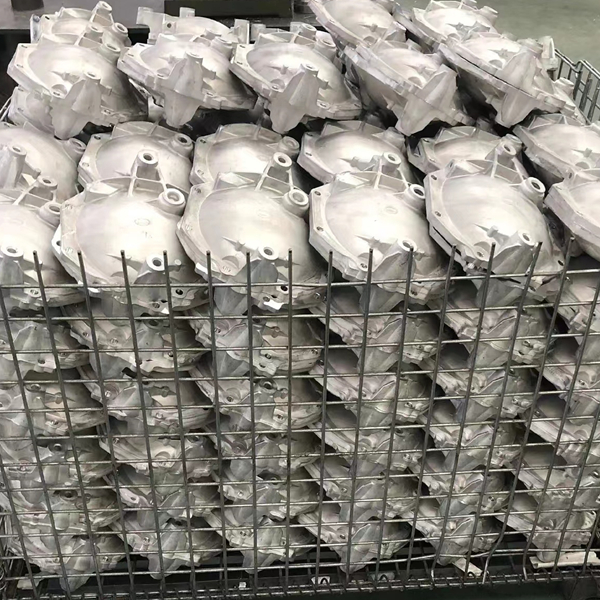Today’s high-velocity manufacturing environment demands precision, efficiency and innovation—aluminum die casting is a key manufacturing process to help achieve these requirements by providing strong and lightweight parts with tight tolerances and high repeatability. At Falcon CNC Machining we utilize the latest technologies and have the industry knowledge, skills and experience to provide world-class aluminum die casting services to leading businesses in automotive, aerospace, electronics and industrial manufacturing industries.
But what does aluminum die casting involve? Why can some applications be more complex than others? And what methods provide the most success for working with aluminum? Let's explore.
1. Grasping the Process of Aluminum Die Casting
Essentially, aluminum die casting is a high-pressure metal casting operation that introduces molten aluminum into a mold cavity, typically constructed from hardened tool steel, generating high-accuracy parts with detail.
The totality of the process consists of several steps:
Design and Production of the Die:
Any operation that is successful starts with a die engineered to precision. Using advanced CAD/CAM software, our engineers design the die to allow optimal flow of the aluminum, minimize air entrapping, and promote the longevity of the tool.
Choice of Alloy and Melting:
The alloys can include A360, A380, and ADC12, which offer differing positives such as fluidity, corrosion resistance, or strength. The aluminum can be melted to about 660 degrees Celsius or 1220 degrees Fahrenheit.
Injection and Solidification:
With die-casting machines that hold great immense force, the molten aluminum is injected into the cavity of the die at pressures of 1,500 to 25,000 psi. Within litres of a second, the metal fills every crevice of the cavity, and solidifies and cools almost instantly.
Ejection and Trimming:
Once solidified, the part is ejected. The excess material known as flash will be removed through trimming and further processes that are added after die casting.

2. Surface Treatment and Inspection:
Depending on application, the casting may go through a process of deburring, machining, anodizing, or powder-coating. Every piece is inspected to achieve dimensional and cosmetic perfection.
Real-life application:
One of our clients in aerospace, needed complex and lightweight structural component, with a zero-porosity and tight flatness tolerance specification. Falcon CNC provided flawless parts in half a lead time compared to average lead times, by custom die optimization and advanced control of cooling.Challenges within Aluminum Die Casting
Though aluminum die casting provides fabulous advantages, there are also technical challenges that must be overcome.
Material Reactivity:
Aluminum has a propensity to form oxides when exposed to air. If not controlled, oxide inclusions can create weak points within metal parts.
Thermal Cracking and Die Fatigue:
Heat cycling causes the steel dies to be stressed, leading to die cracking and failure. Die selection and thermal management is important.
Porosity and Air Entrapment:
Gas porosity can occur because the molten metal can entrap air at the time of injection. Our team deals with this issue through vacuum-assisted die casting technology and improved gating design.
Shrinkage defects:
As aluminum cools, it shrinks. Without close temperature control, parts may warp or experience internal stresses during cooling.
At Falcon CNC, we strive to mitigate these challenges by utilizing sound scientific die design principles, high precision temperature control, or advanced vacuum die casting technology.
3. Why aluminum can be “less-than-ideal” for die casting:
While aluminum is very amenable to die casting, it does present a few challenges when compared to different die cast materials like zinc.
Higher Melting Point:
Aluminum requires a higher amount of energy input and stronger dies; this slightly increases the overall cost of operation.
Lower fluidity than zinc:
Some complicated geometries are more difficult to fill, without an optimized gating system.
Thermal conductivity:
Aluminum cools rapidly which creates time sensitive issues during injection and solidification time.Nevertheless, because of Falcon CNC’s grasp of these concerns, this can be addressed and resolved, and aluminum die casting is proven not only possible but a smart strategy for high-performing parts.

4. The Three Main Aluminum Casting Processes
Based on your project objectives, your production quantity, and the quality of the part, we will recommend one of three different casting processes.
Die Casting:
Best suited for the high-volume production of parts (thousand to millions).
Has tight tolerances, thinner walls, and minimal machining.
Considered ideal for automotive, consumer electronics, and lighting applications.
Permanent Mold Casting:
Best suited for medium volumes.
Blocks will have better mechanical properties than sand or die casting due to slower cooling rates.
Considered ideal for aerospace structural parts and marine applications.
Sand Casting:
Best suited for prototypes, very large parts, or low-volume runs.
Maximum design flexibility but usually more machining is needed.
5. Is Die Cast Aluminum a Good Material Selection?
In a nutshell, it is.
How come companies across the world are choosing die cast aluminum??
Strong but Lightweight:
High strength-to-weight ratios are critical in the aerospace and automotive markets.
Great Corrosion Resistance:
Aluminum will form a natural oxide layer that provides protection to endure in harsh environments.
Great Thermal and Electrical Conductivity:
Great for heat sinks and electronic housings, and motors housings.
Cost Effective for Large Quantity Production:
Once you have the dies built, part cost per piece drops significantly, particularly for production quantities over 50,000.
Sustainability:
You can recycle aluminum, and it can maintain its properties after 100%, which supports environmental responsible manufacturing initiatives.
6. The Future of Aluminum Die Casting: Innovation at Falcon CNC Machining
At Falcon CNC Machining, we do not just follow trends, We innovate in them. Falcon CNC partners with you and helps you create lighter, stronger, and smarter aluminum components and then partner with you again to take it to the next level through Industry 4.0 manufacturing practices, real-time quality engagement, and advanced simulation software.
There are capabilities such as:
Advanced 5 Axis Machining for precision secondary operations.
Customized Alloys for specific strength, weight, or conductivity requirements..
Rapid Prototyping Services which improve time to market for your design.
Whether you need 10 aluminum parts or a million, Falcon CNC will partner with you and produce your aluminum die casting parts for you with confidence.
Contact Us Today!
Are you ready to experience world-class aluminum die casting solutions?
Let’s create something awesome together.
Contact Falcon CNC Machining today for a consultation, and let's shape your next project together.